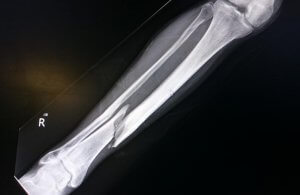WHAT IS A SPIRAL FRACTURE? ACCIDENT LAWYER
Our attorneys represent people in all kinds of Minnesota accidents. We also handle all different types of injuries. One injury we frequently see from a bad accident is a broken bone spiral fracture. An injury lawyer recently came across an article in Medical News Today with a good explanation of a spiral fracture. Here is a summary of the information in the article:
A spiral fracture happens when a long bone is torn in half by a twisting force or impact. The long bones are the bones of the body that are longer than they are wide. Spiral fractures are sometimes called torsion or twisting fractures. Most spiral fractures involve the long bones of the legs, such as the femur, tibia, and fibula. The injury can also involve the long bones of the arms, including the humerus, ulna, and radius.
When long bones are broken at an angle, they often separate into two parts that do not align and have rough, uneven edges. This fracture can make it difficult to put the bone back together. Spiral fractures are usually serious injuries and carry the risk of complications.

Causes of Spiral Fracture
Anything that puts a lot of twisting stress or force on a long bone can cause a spiral fracture. But a few specific motions, activities, and circumstances are most associated with this injury. Our top accident injury lawyers MN handle cases involving most of these causes.
Causes of spiral fractures include:
- Motor vehicle and motorcycle accidents.
- Bicycle accidents, typically those involving a motor vehicle.
- Falling after trying to compensate for a loss in balance by putting out an arm or quickly repositioning the leg.
- Child abuse, if a child’s arm or leg has been jerked aggressively.
- Falling down the stairs or a slope with fixed obstacles. For example, rocks or trees that can twist an arm or leg away from the rest of the body.
- Physical violence, when a person’s arm or leg has been twisted forcibly.
- Machinery injuries that involve someone’s limbs.
Symptoms of spiral bone fracture
Spiral fractures can be extremely painful. Other symptoms commonly associated with the injury include:
- Fainting or losing consciousness.
- Inability to put weight on the affected bone.
- Loss of feeling and control in the lower leg or arm, especially in the feet and hands.
- Bone tenting, where the fractured bone is ready to break through the skin.
- Inability to straighten or fully extend the leg or arm.
Diagnosis of broken bone
A doctor will usually begin by examining the injury, potentially trying to straighten or bend the affected bone. They will also ask questions about when and how the injury happened and how it has been treated so far.
Other tests used to diagnosis spiral fractures include:
- X-rays
- CT scans
- radiographs
- blood tests
Without proper imaging, a spiral fracture can be mistaken for another type of fracture, such as an oblique fracture. On scans and X-rays, a spiral fracture is identifiable because it looks like a corkscrew.
Treatment for a Spiral Fracture
Spiral fracture treatment depends on the severity of the break and damage to the surrounding tissues and blood vessels. Immediately after the injury takes place, it is important to make sure no weight is put on the fracture. It should also be splinted to prevent further damage. The affected limb should be elevated to heart level and iced to reduce blood flow and limit inflammation. Ice should be applied for no longer than 10 minutes at a time.
Acetaminophen is the only over-the-counter medication recommended during initial treatment for a bone fracture. Anti-inflammatory medications weaken the blood’s ability to clot and may make internal bleeding worse.
A person should not eat or drink anything immediately after the fracture, as surgery may be required.
Surgery after Accident Spiral Fracture
Most spiral fractures require surgery and general anesthesia. Less severe cases, where the bone is not fully separated, may be operated on using local anesthesia. If the two ends of the bone are separated, an open reduction surgery will be necessary. For this procedure, surgeons cut the skin to expose the broken bone. They will then examine the entire area, looking for stray pieces of bone, broken blood vessels, and tissue damage before fixing the bone. If necessary, the bone is reinforced using pins, screws, or rods to ensure it stays aligned while healing. When the surgery involves reinforcement, it is called open reduction with internal fixation surgery.
If the bone is not separated, a doctor may perform closed reduction surgery. Surgeons will guide the bone into proper alignment from the outside, manipulating the bone through the skin. A lawyer from our office will help you recover compensation for the medical bills (which will be substantial) for this injury.
Post-surgical treatment for broken bone
A splint is frequently used to reinforce the proper positioning of the bone ends after surgery. A splint can be easily adjusted to allow for inflammation. For the first few weeks of healing, the broken bone needs to be completely immobilized or prevented from moving. A cast is usually applied once the swelling has gone down. A brace may replace the cast after a few weeks. This is nice because a brace can be removed for cleaning, physical therapy, and examination. A wheelchair, crutches, or a walker may also be necessary to limit the weight put on the limb.
For the first 48 hours after the splint and cast are applied, the limb should be elevated to heart level. Icing and elevation should be used periodically throughout the day as needed or directed by a doctor. Medications will be prescribed to help manage pain. A doctor will typically also prescribe antibiotics to prevent infection.
REHABILITATION AFTER ACCIDENT SURGERY
Gradual weight-bearing activities may be appropriate 4 to 6 weeks after the injury. However, for severe cases, it often takes 12 or more weeks before the bone can begin to bear weight. Reinforcing devices like rods and pins are usually removed between 3 and 6 months after surgery. Even after the cast or brace is removed, most people still need to limit movement in the affected limb.
With leg injuries, a walker or crutches may be used for a few weeks or months after casts or braces are removed. In total, it often takes between 4 and 6 months for a full recovery from a spiral fracture. Some injuries may take as long as 18 months to heal properly. There is often significant time off from work during this healing time after the accident, and our injury lawyers will work to make sure you are fully reimbursed for this.
Complications for bone fracture
If left untreated, a fracture can be life-threatening. Spiral fractures also increase the risk of developing additional health conditions. Complications can also occur during surgery.
Common complications associated with spiral fractures include:
- compartment syndrome, where blood to the leg is stopped by inflammation or swelling.
- blood vessel and nerve damage.
- muscle damage.
- infection, including osteomyelitisor a chronic infection of the deep bone.
- sepsis, when the immune system begins to damage the tissues after being overstimulated by a severe infection.
- non-union or malunion, when the bone does not heal or heals incorrectly.
- pulmonary emboli, when a blood clot breaks loose and goes into the lungs.
ATTORNEYS FOR BROKEN BONE SURGERY INJURY MN
If you have been sustained a broken bone in an accident in Minnesota, please call us and speak with an accident injury lawyer for a free consultation. Pam Rochlin and David Rochlin are experienced personal injury accident lawyers with more than 25 years’ experience. We have successfully represented people in hundreds of car, motorcycle and other accident injury cases.
Pam Rochlin is a former partner at Meshbesher and Spence, now offering small firm attention and personal service. David and Pam are married, and we treat our clients like they are a part of our family.
We have offices in Minneapolis, St. Louis Park and Woodbury. Our attorneys also meet our personal injury accident clients at their homes in St. Paul, Chanhassen, Chaska, and Maple Grove. Also, Apple Valley, White Bear Lake, Brooklyn Park, and other cities throughout Minnesota.
